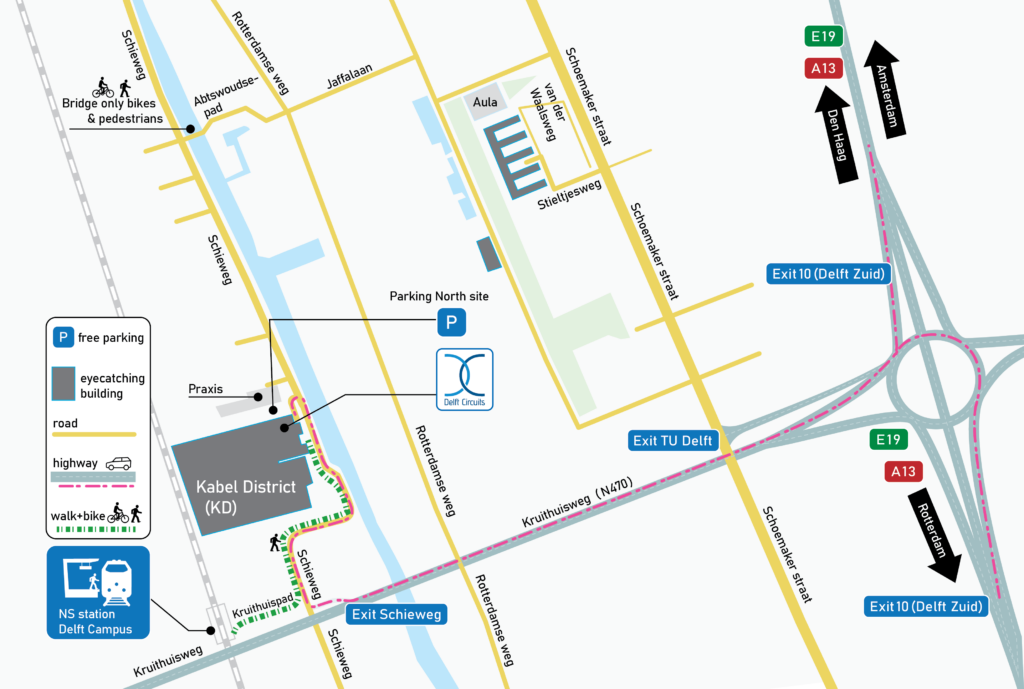Contact us
New! Schedule a meeting with our team immediately!
Directions
By car
Take exit 11 from highway A13/E19 and follow the “Kruithuisweg (N470)” into the direction of “Delft-Zuid Schipluiden”. Exit the “Kruithuisweg” in the direction of “Schieweg Delft Campus” and turn right at the traffic lights. Follow the “Schieweg” until you reach the “Kabel district” (KD) sign and turn left into the parking. Look for the entrance “Schieweg 15A LABS” and you’ll find us in unit 17.
By foot from the Delft Campus train station
Walk along the “Kruithuispad” in the eastern direction and turn left at the “Schieweg”. Follow the “Schieweg” until you reach the “Kabel district” (KD) sign and turn left into the parking. Look for the entrace “Schieweg 15A LABS” and you’ll find us in unit 17.
By bike or foot from the TU Delft
Follow the green route. Keep in mind that this route is only for cyclists and pedestrians. Cars are not allowed.

